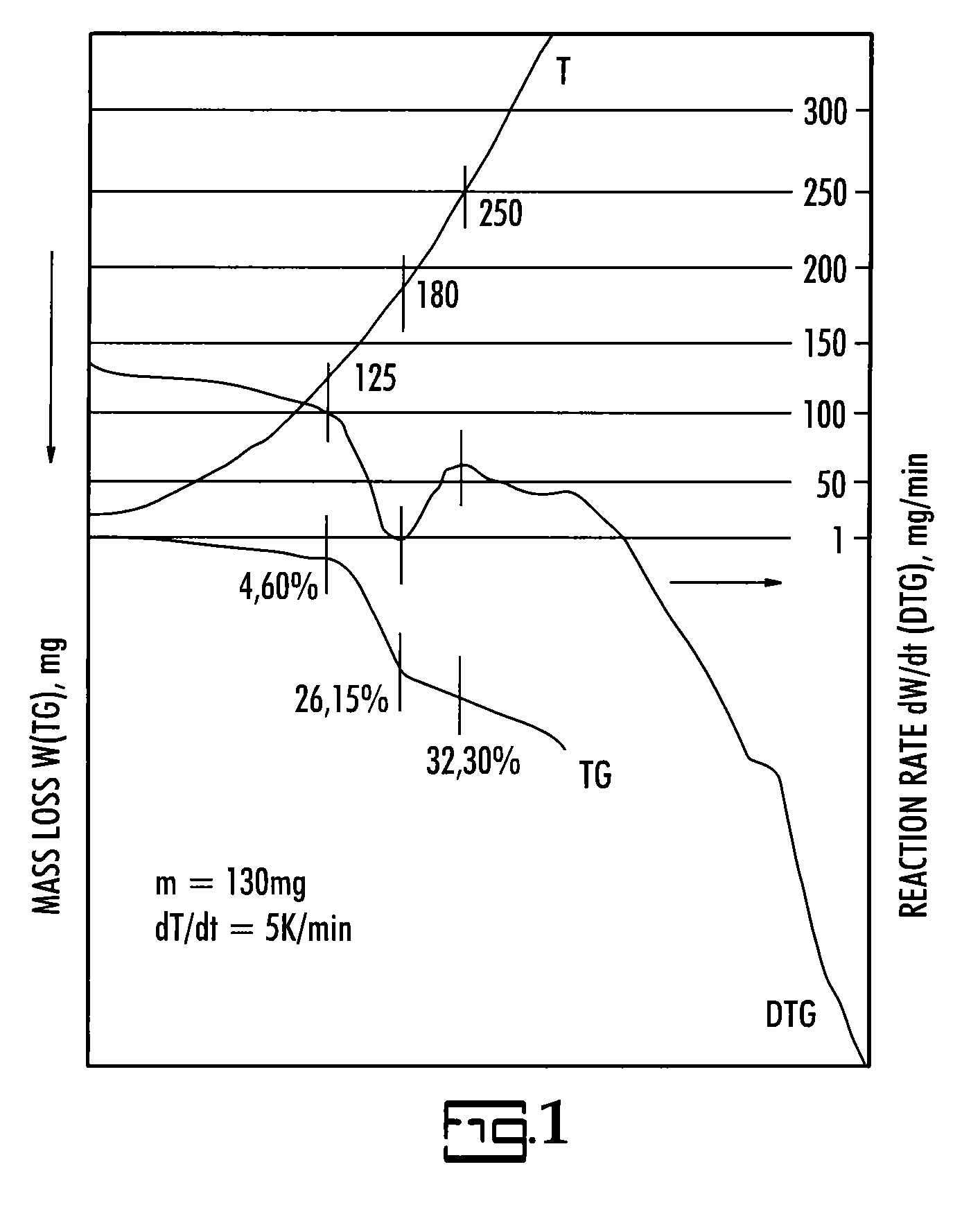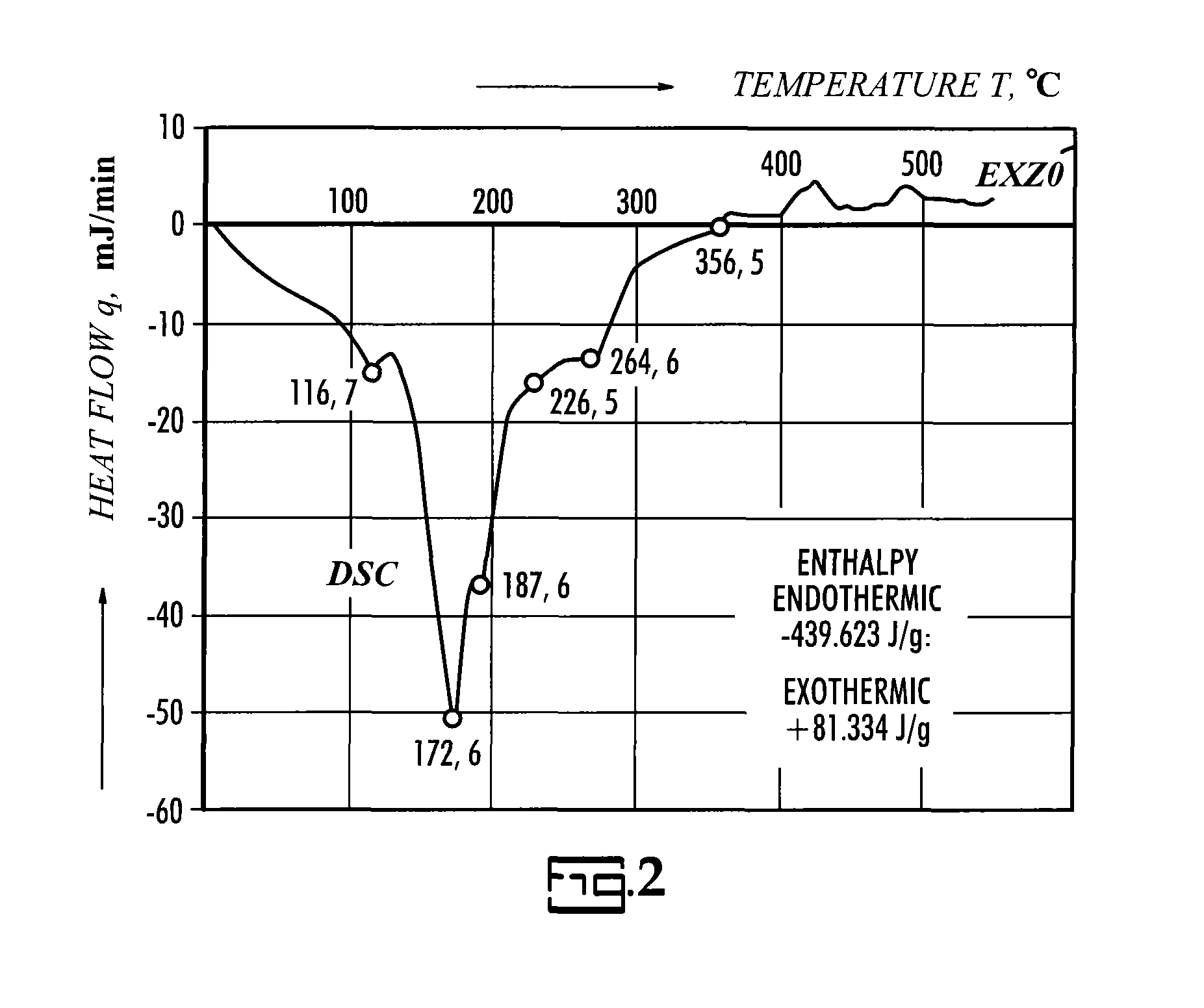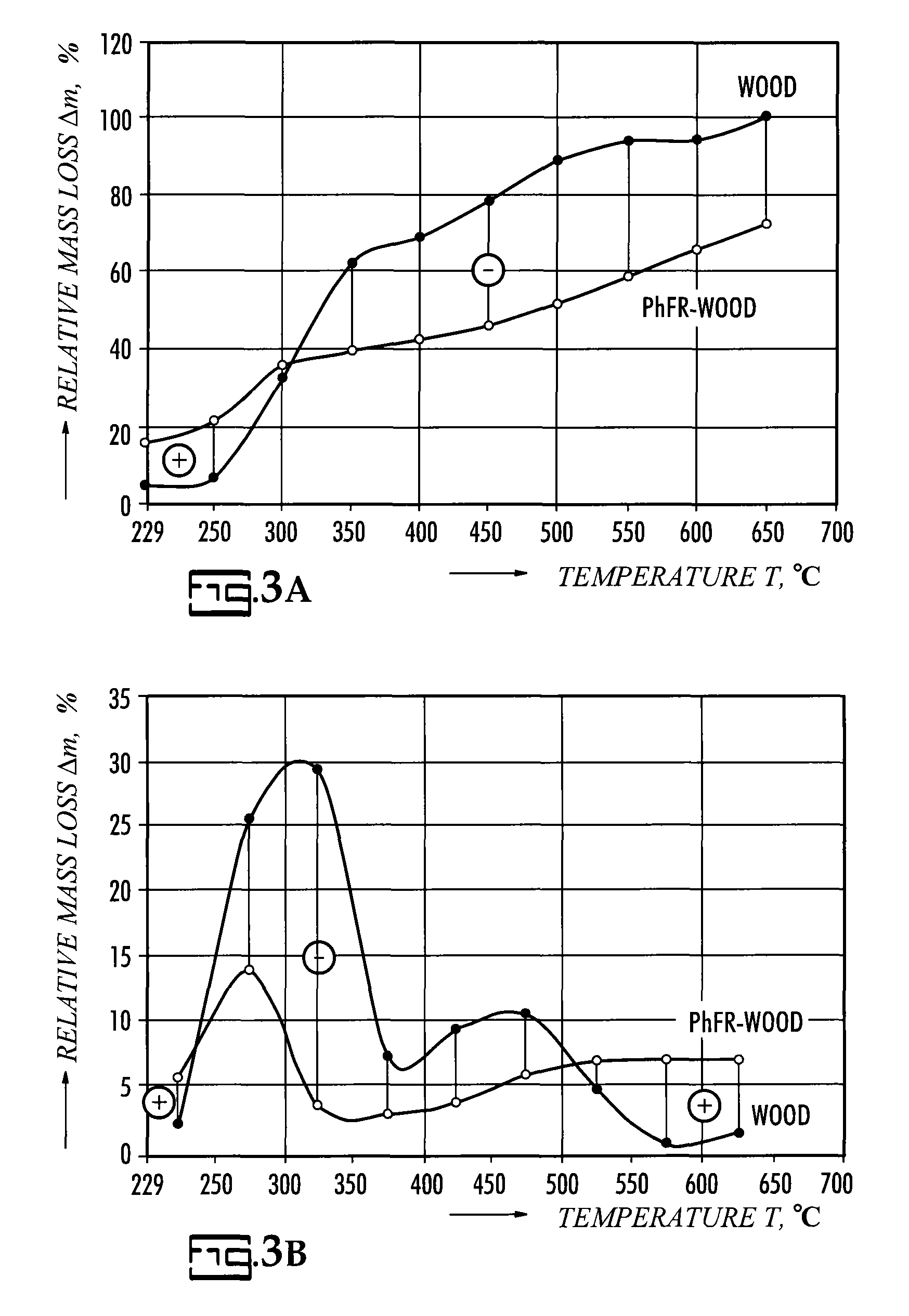Biodegradable halogen-free flame retardants composition and methods for use
a flame retardant and biodegradable technology, applied in the direction of ignifugeant addition, fire extinguisher, abrasion resistant fibres, etc., can solve the problems of limiting flame burning, serious injury and significant material damage, and harmful to human health and the environment, so as to improve the result of impregnation and reduce the smoke developed index
- Summary
- Abstract
- Description
- Claims
- Application Information
AI Technical Summary
Benefits of technology
Problems solved by technology
Method used
Image
Examples
example 1
[0124]In one preferred embodiment the flame retardant for cellulosic textile materials is prepared by a composition, which contains, with percentages (%) by mass: 85% orthophosphoric acid—15.0; urea—3.0; triethanolamine—4.0; ammonia water—15.0; polydimethylsiloxane with kinematic viscosity, 20·10−6 m2 / s—1.5, dialkyldimethylammonium sulphate—3.1 and water—58.4.
[0125]The orthophosphoric acid and the urea are mixed and the obtained reaction mixture is heated up from 40° C. to 50° C. with continuous stirring. After the finalization of the interaction, the mixture is cooled down to 20-25° C., diluted with water and homogenized. Then the triethanolamine, ammonia water, polydimethylsiloxane and dialkyldimethylammonium sulphate (surfactant) are added, while continuously stirring until the finished mixture is homogenized.
[0126]The phosphates content in the cellulosic materials, such as P2O5% is within the scope 3.20 to 9.64, depending on the type of fibers, the structure of the fabric, its p...
example 2
[0127]In another embodiment the flame retardant for hydrophobic textile materials (such as polyester, polyamide, polypropylene) and their blends with hydrophilic materials, is prepared from a composition which contains with percentages (%) by mass: 85% orthophosphoric acid—25.0; urea—6.0; triethanolamine—5.0; ammonia water—25.0; polydimethylsiloxane with viscosity 100·10−6 m2 / s—2.5, mixture of alkyl (C6-C18) sulphates and sulphonates—7.5 and water—29.0.
[0128]The composition is prepared based on the methods, detailed in Example 1. The phosphates content in the polymer materials, such as P2O5% is within the range from 3.70 to 7.50.
example 3
[0129]In a different embodiment the flame retardant for hydrophobic textile materials (such as polyacrylnitrile, polyacrylnitrile / polyester blends) is prepared from a composition, which contains with percentages (%) by mass: 85% orthophosphoric acid—16.0; urea—3.0; triethanolamine—4.0; ammonia water—20.0; polydimethylsiloxane with viscosity 100·10−6 m2 / s—2.0, mixture of alkyl (C6-C18) sulphates and sulphonates—7.5, alkylamydopropylbetaine—2.5 and water—45.0.
[0130]The composition is prepared, based on the method, detailed in Example 1.
[0131]The phosphates content in the hydrophobic materials, such as P2O5% is within the range from 4.80 to 12.80.
PUM
| Property | Measurement | Unit |
|---|---|---|
| weight | aaaaa | aaaaa |
| temperature | aaaaa | aaaaa |
| temperature | aaaaa | aaaaa |
Abstract
Description
Claims
Application Information
 Login to View More
Login to View More - R&D
- Intellectual Property
- Life Sciences
- Materials
- Tech Scout
- Unparalleled Data Quality
- Higher Quality Content
- 60% Fewer Hallucinations
Browse by: Latest US Patents, China's latest patents, Technical Efficacy Thesaurus, Application Domain, Technology Topic, Popular Technical Reports.
© 2025 PatSnap. All rights reserved.Legal|Privacy policy|Modern Slavery Act Transparency Statement|Sitemap|About US| Contact US: help@patsnap.com



